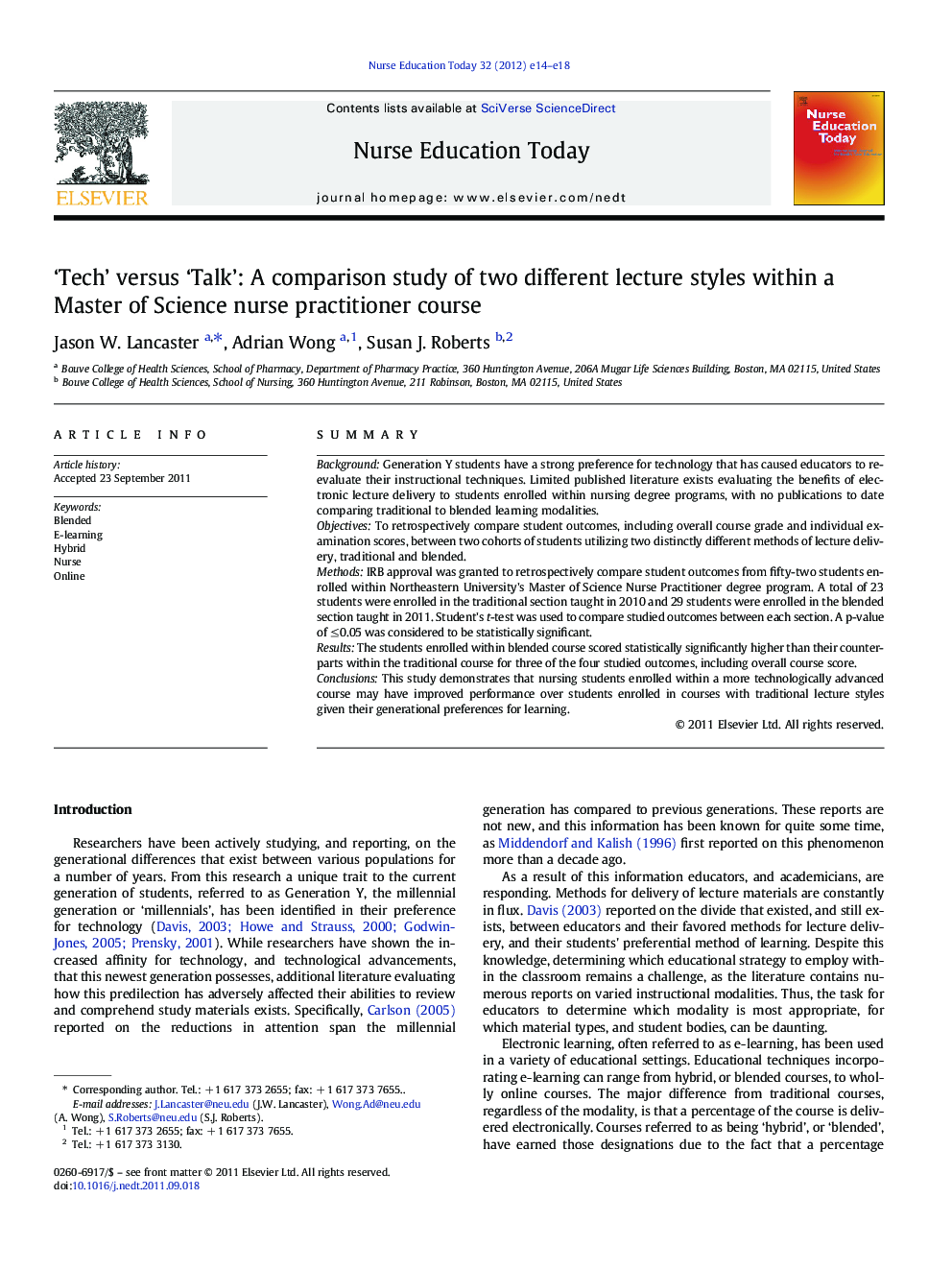| Article ID | Journal | Published Year | Pages | File Type |
|---|---|---|---|---|
| 368995 | Nurse Education Today | 2012 | 5 Pages |
SummaryBackgroundGeneration Y students have a strong preference for technology that has caused educators to re-evaluate their instructional techniques. Limited published literature exists evaluating the benefits of electronic lecture delivery to students enrolled within nursing degree programs, with no publications to date comparing traditional to blended learning modalities.ObjectivesTo retrospectively compare student outcomes, including overall course grade and individual examination scores, between two cohorts of students utilizing two distinctly different methods of lecture delivery, traditional and blended.MethodsIRB approval was granted to retrospectively compare student outcomes from fifty-two students enrolled within Northeastern University's Master of Science Nurse Practitioner degree program. A total of 23 students were enrolled in the traditional section taught in 2010 and 29 students were enrolled in the blended section taught in 2011. Student's t-test was used to compare studied outcomes between each section. A p-value of ≤ 0.05 was considered to be statistically significant.ResultsThe students enrolled within blended course scored statistically significantly higher than their counterparts within the traditional course for three of the four studied outcomes, including overall course score.ConclusionsThis study demonstrates that nursing students enrolled within a more technologically advanced course may have improved performance over students enrolled in courses with traditional lecture styles given their generational preferences for learning.
